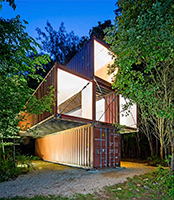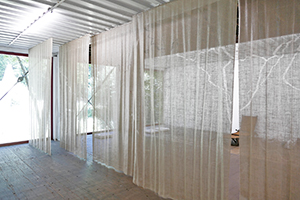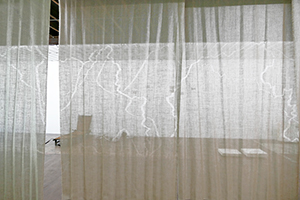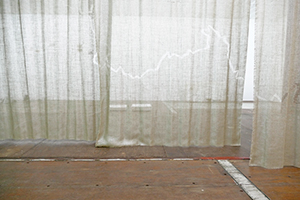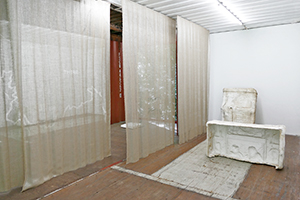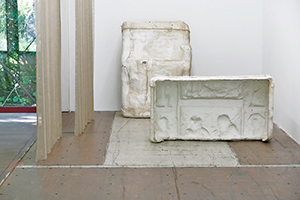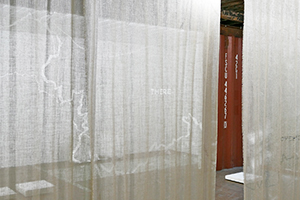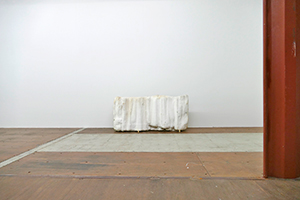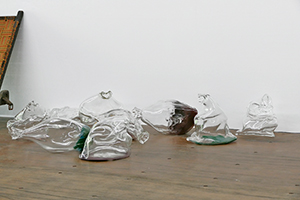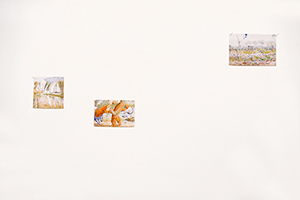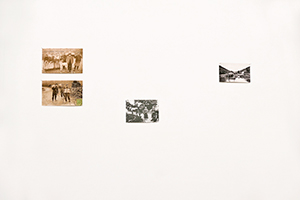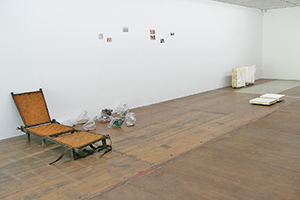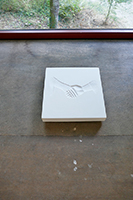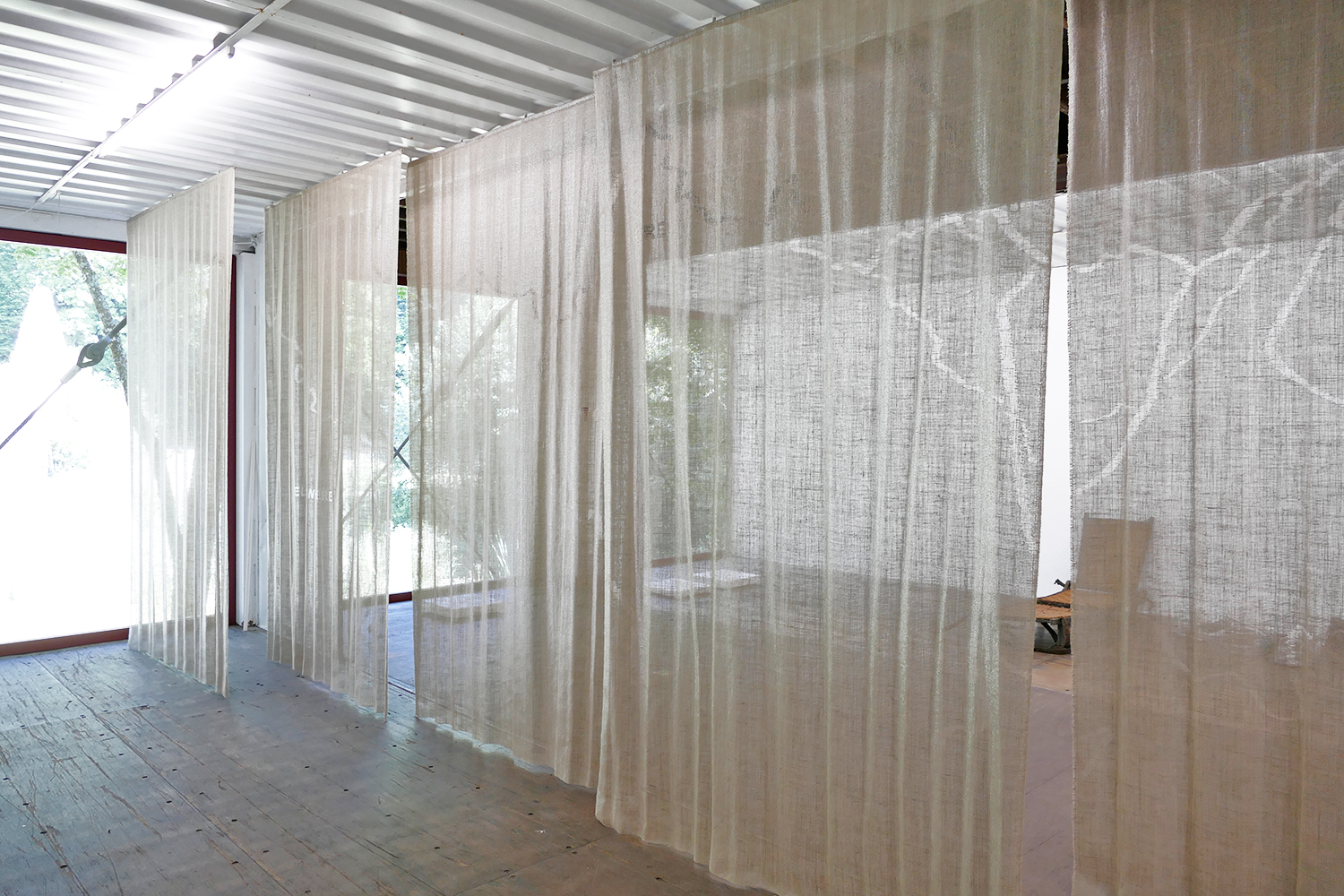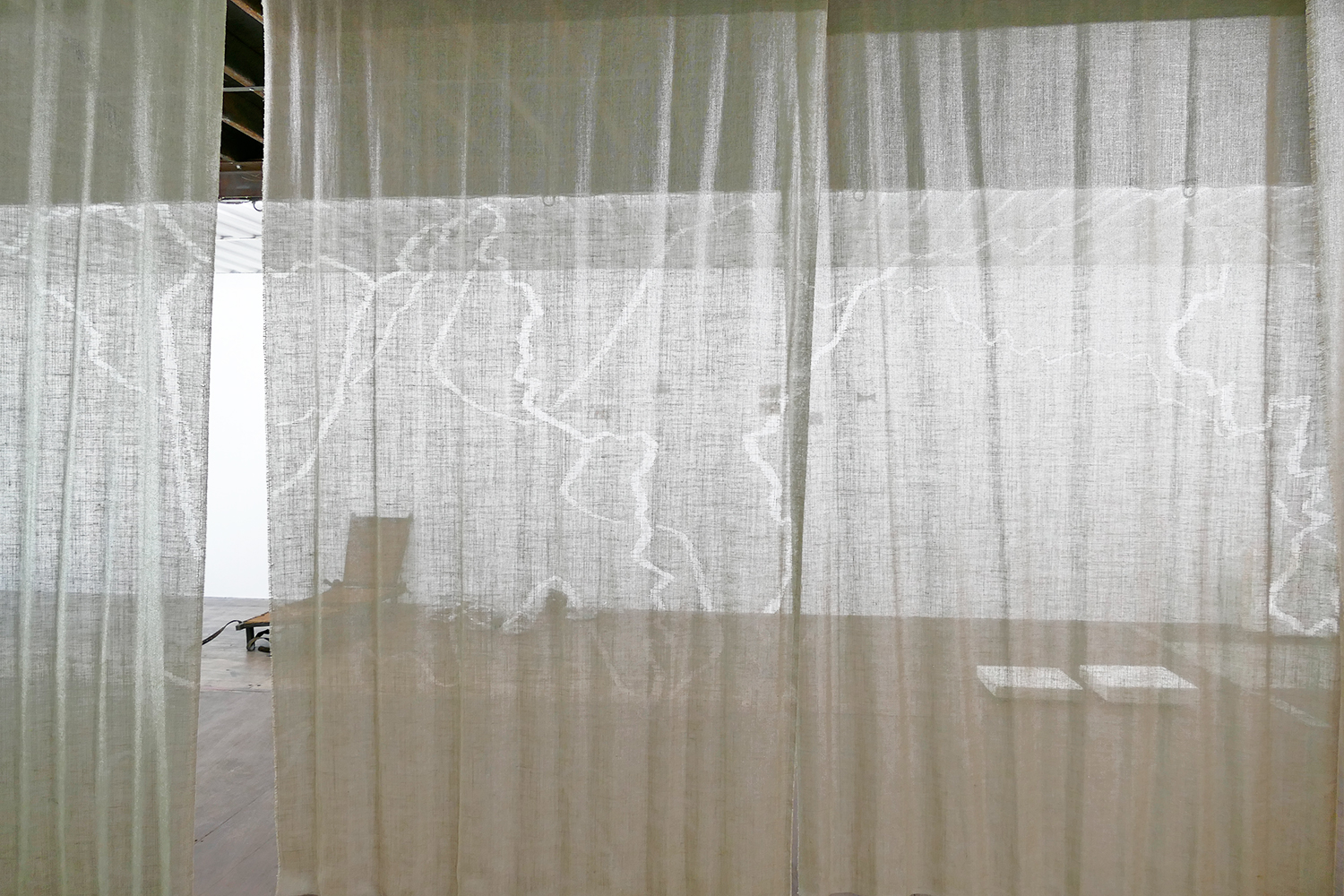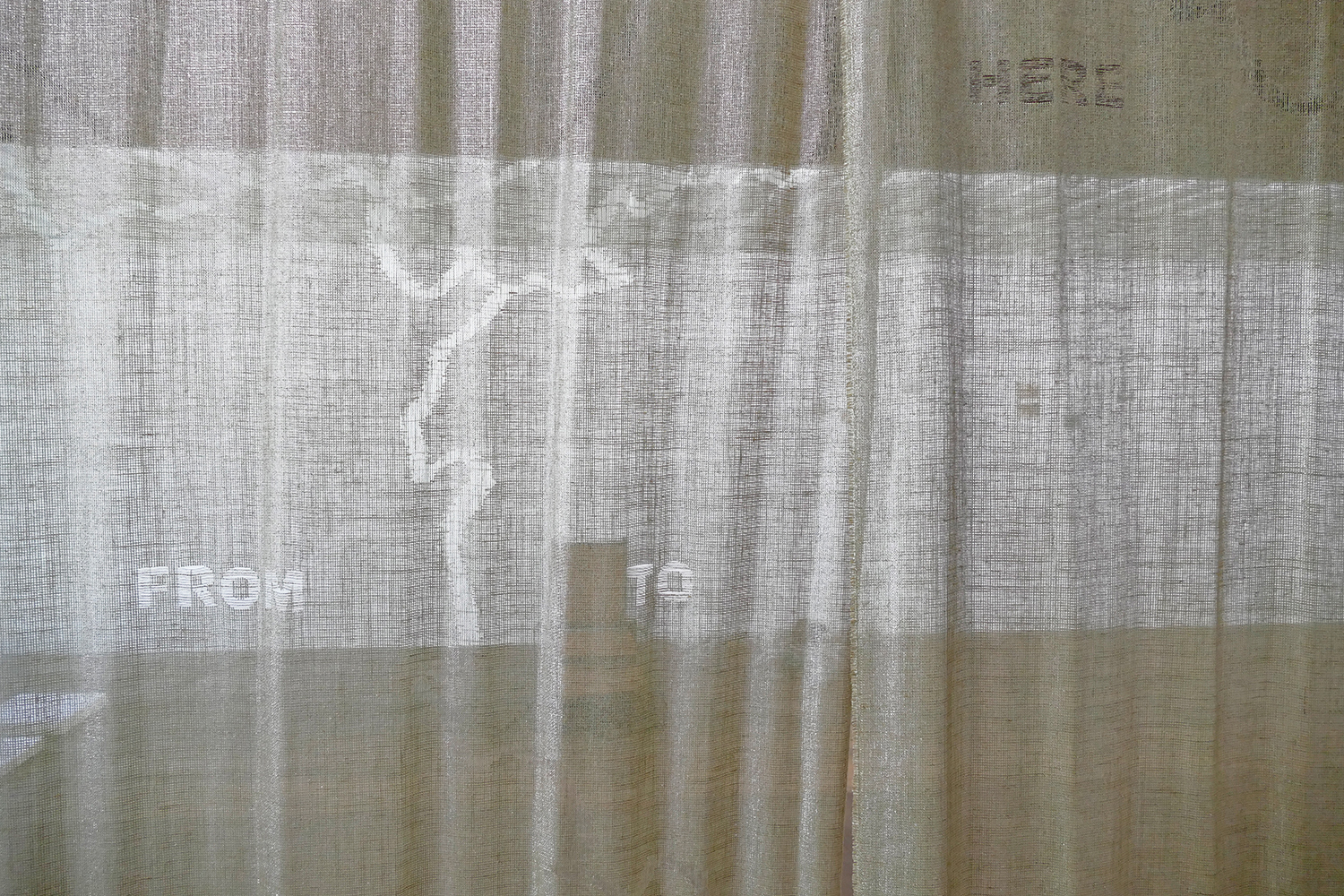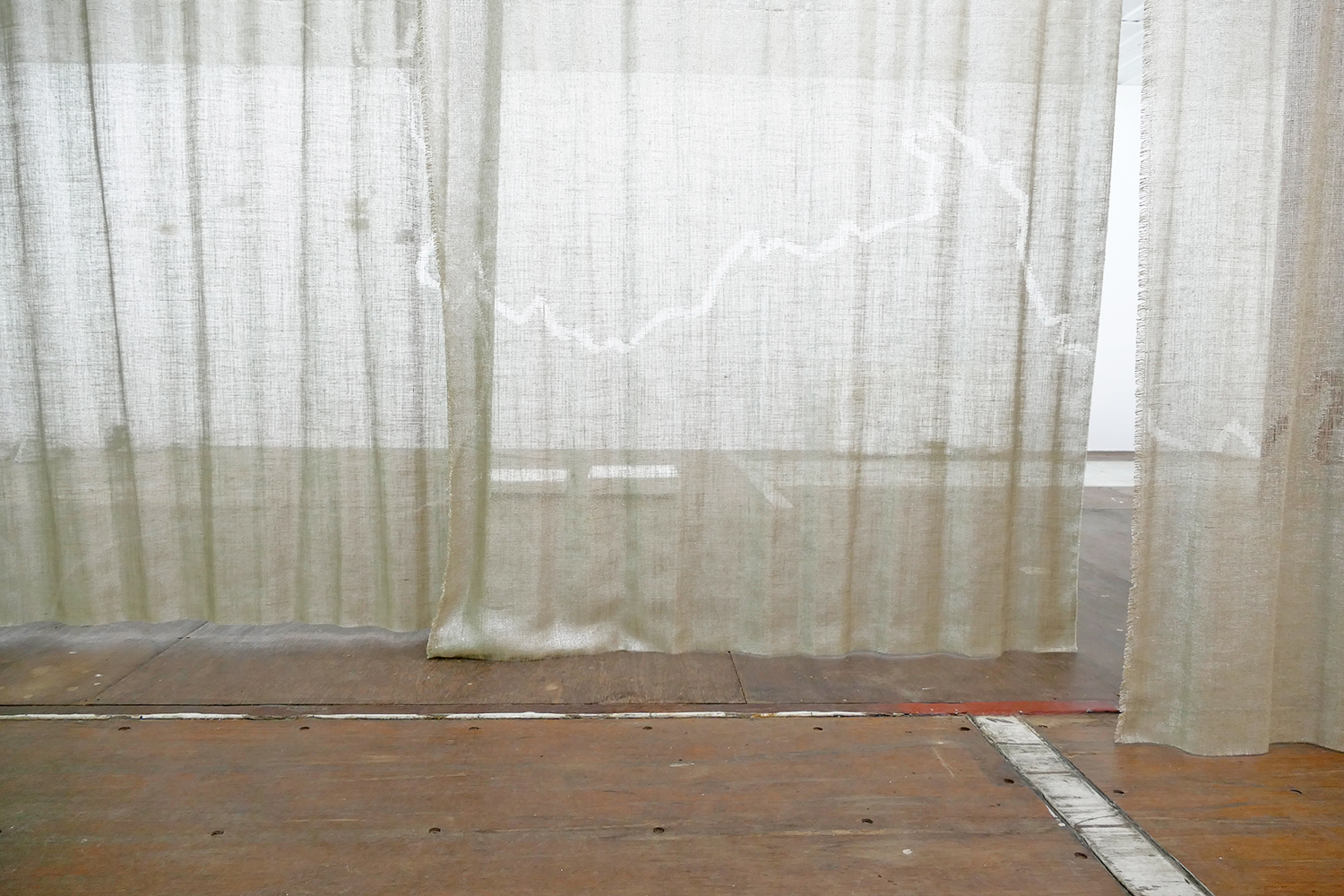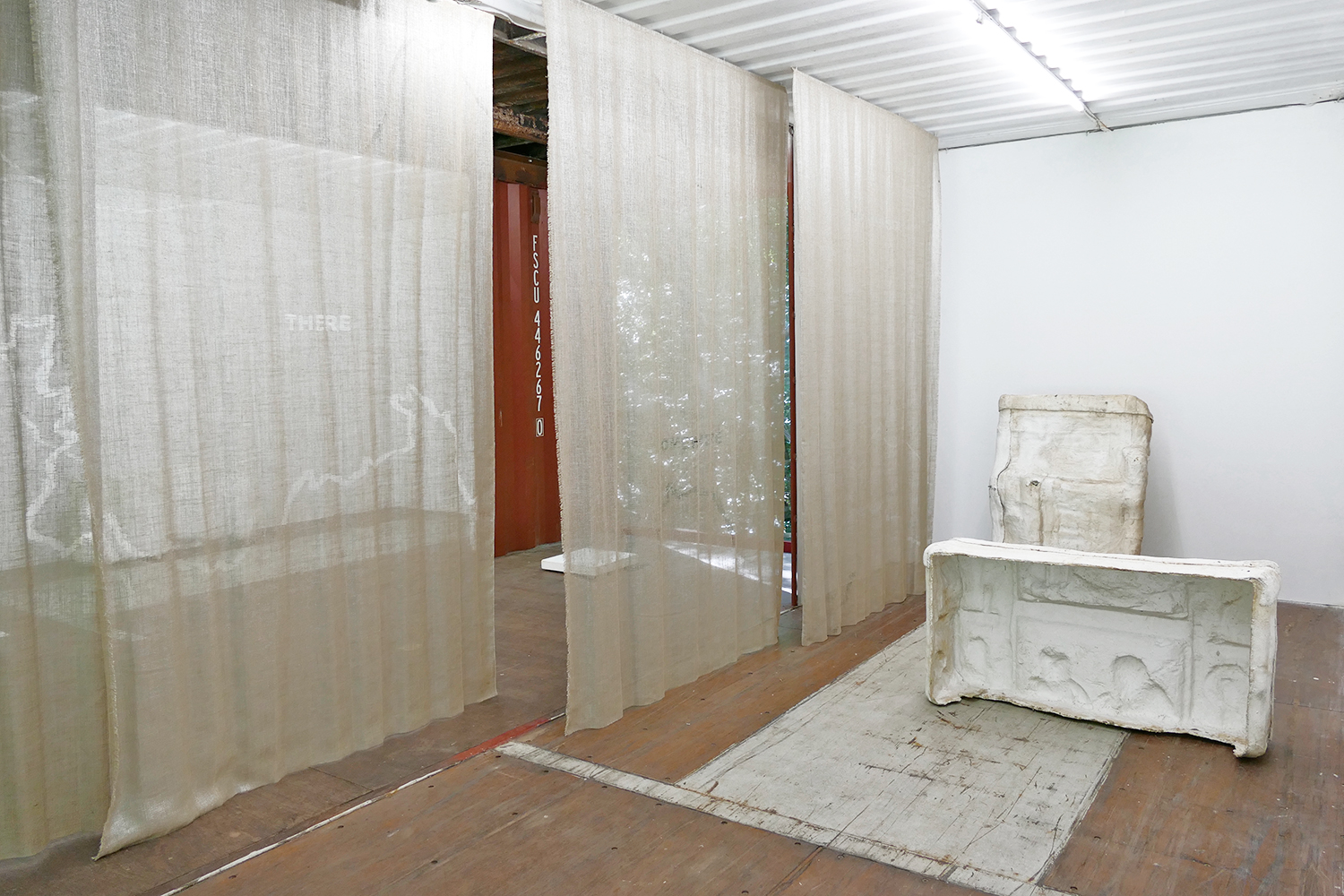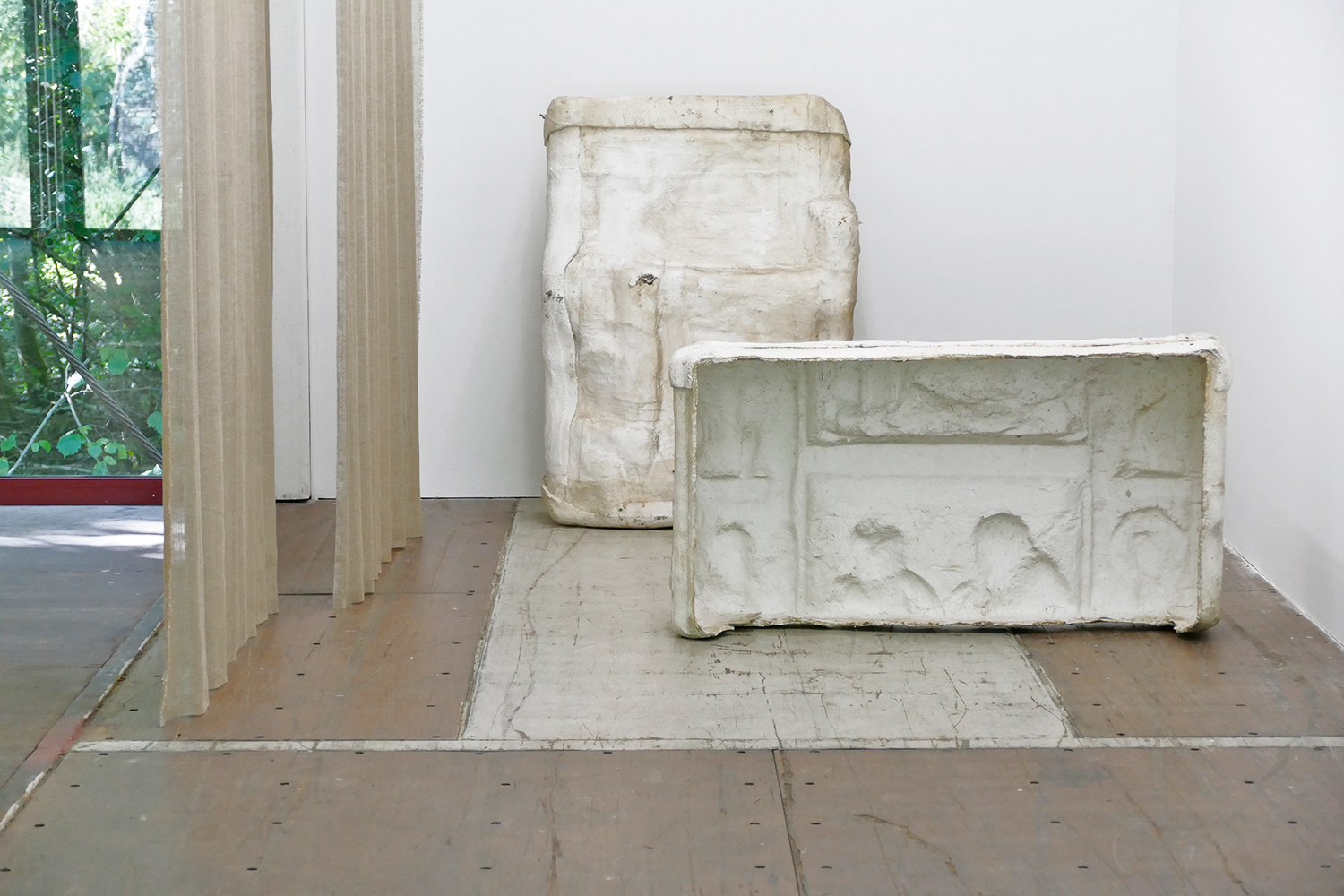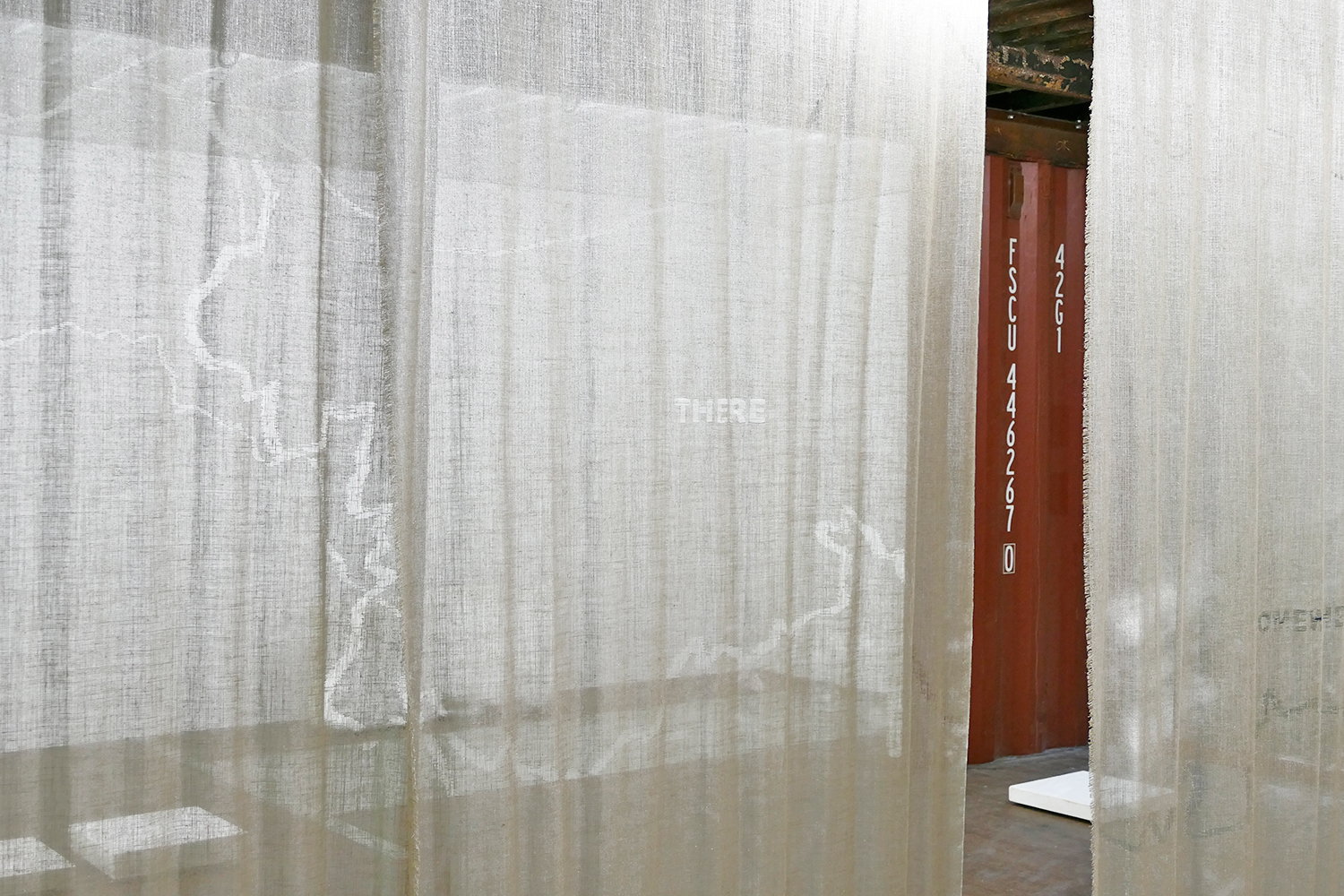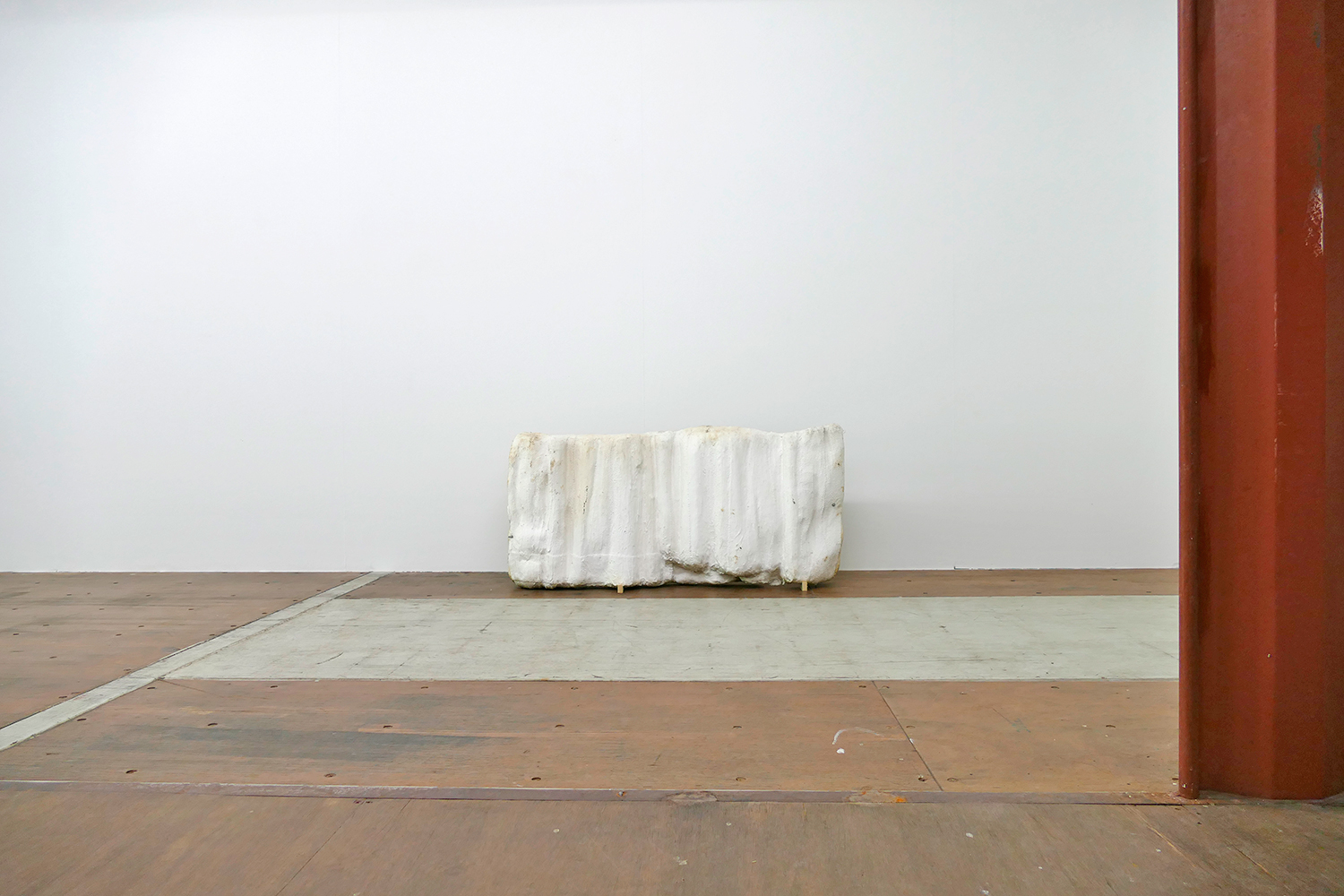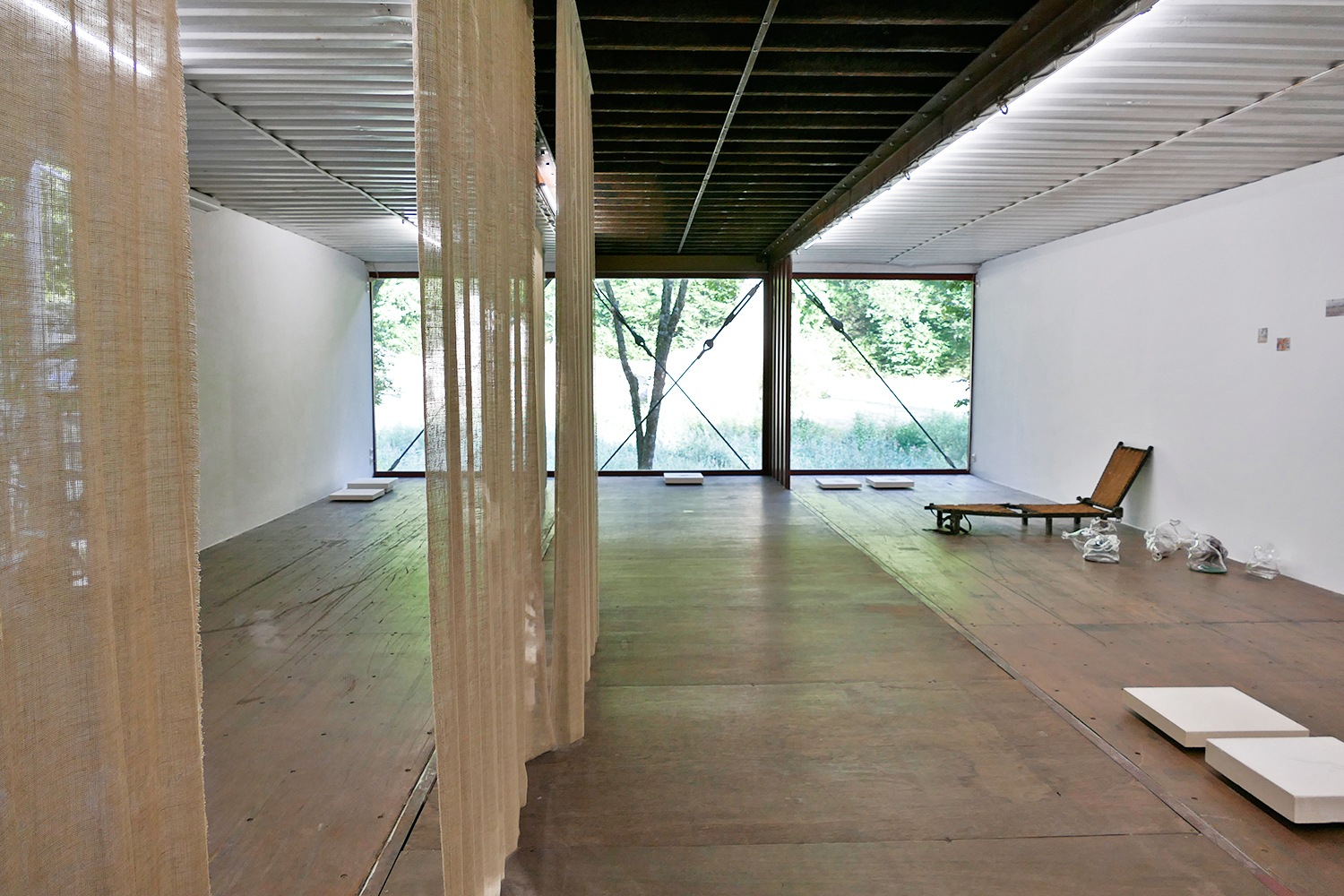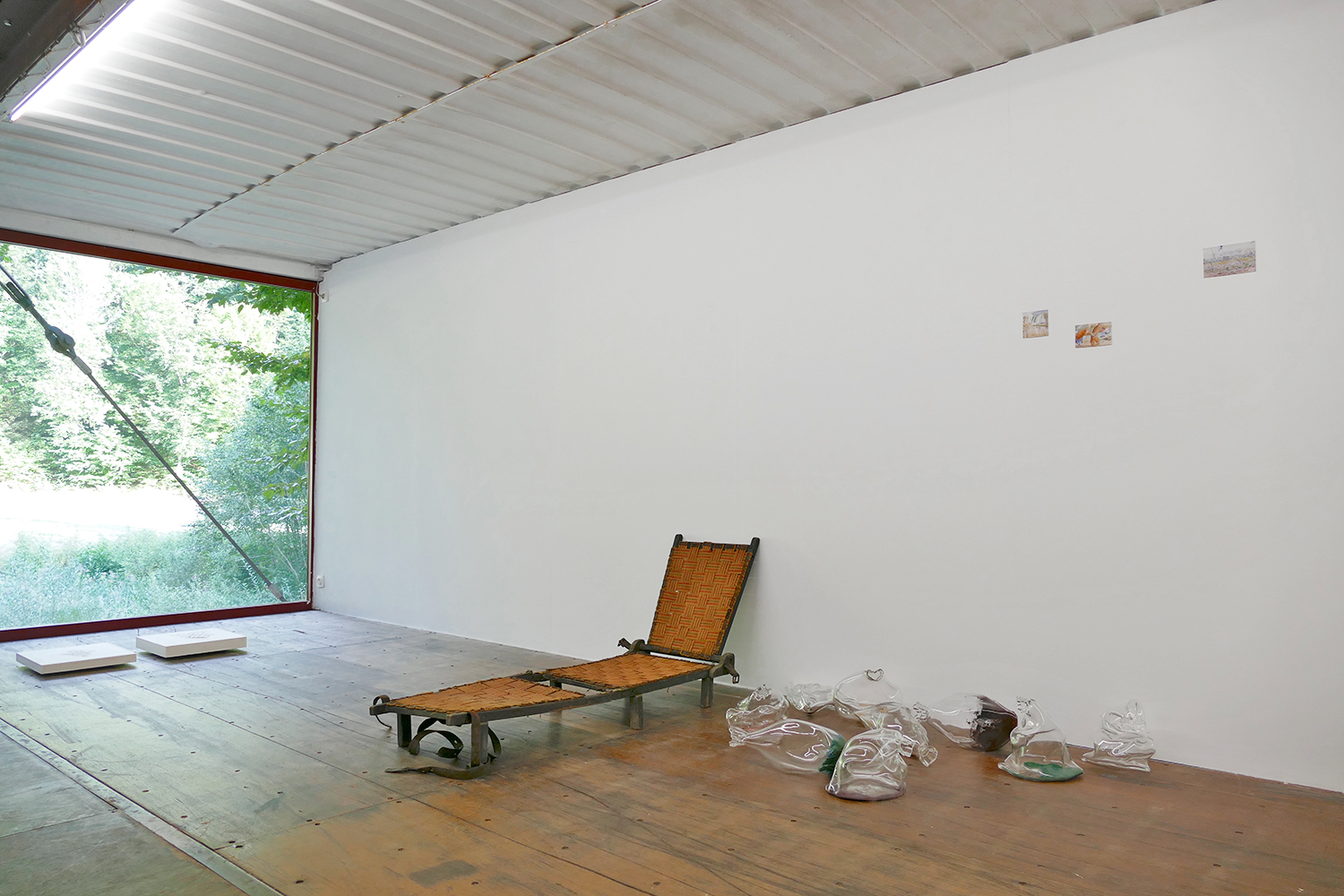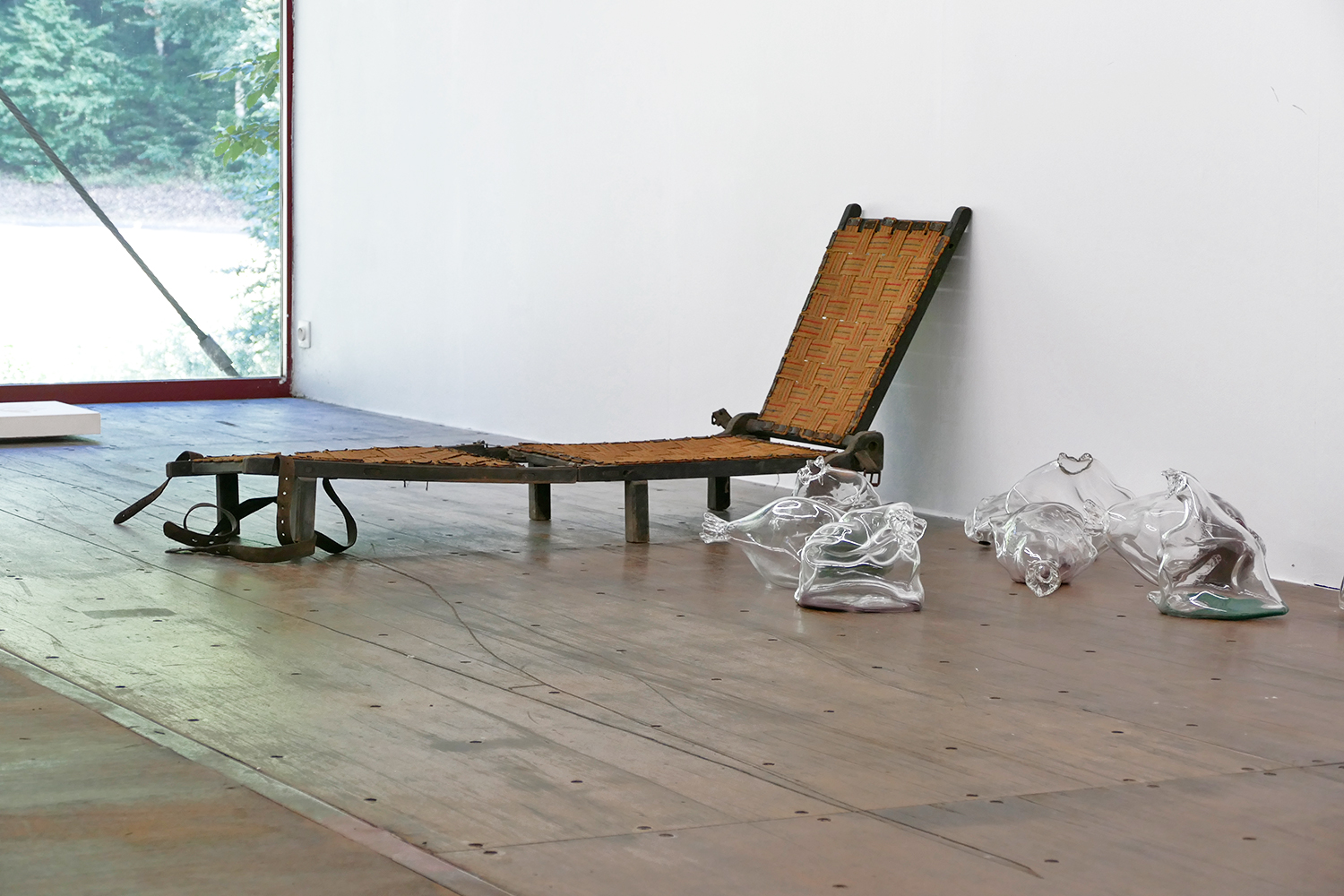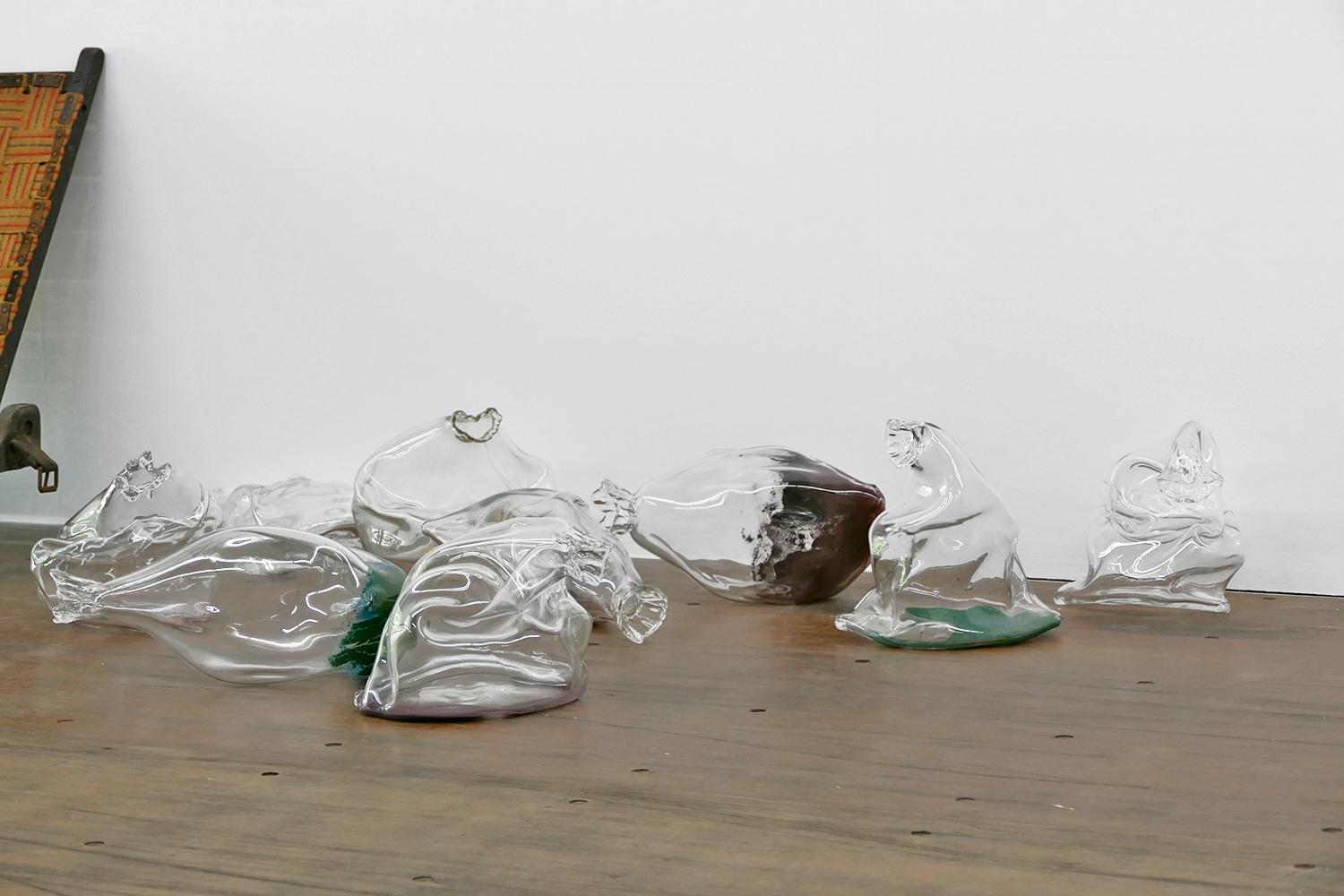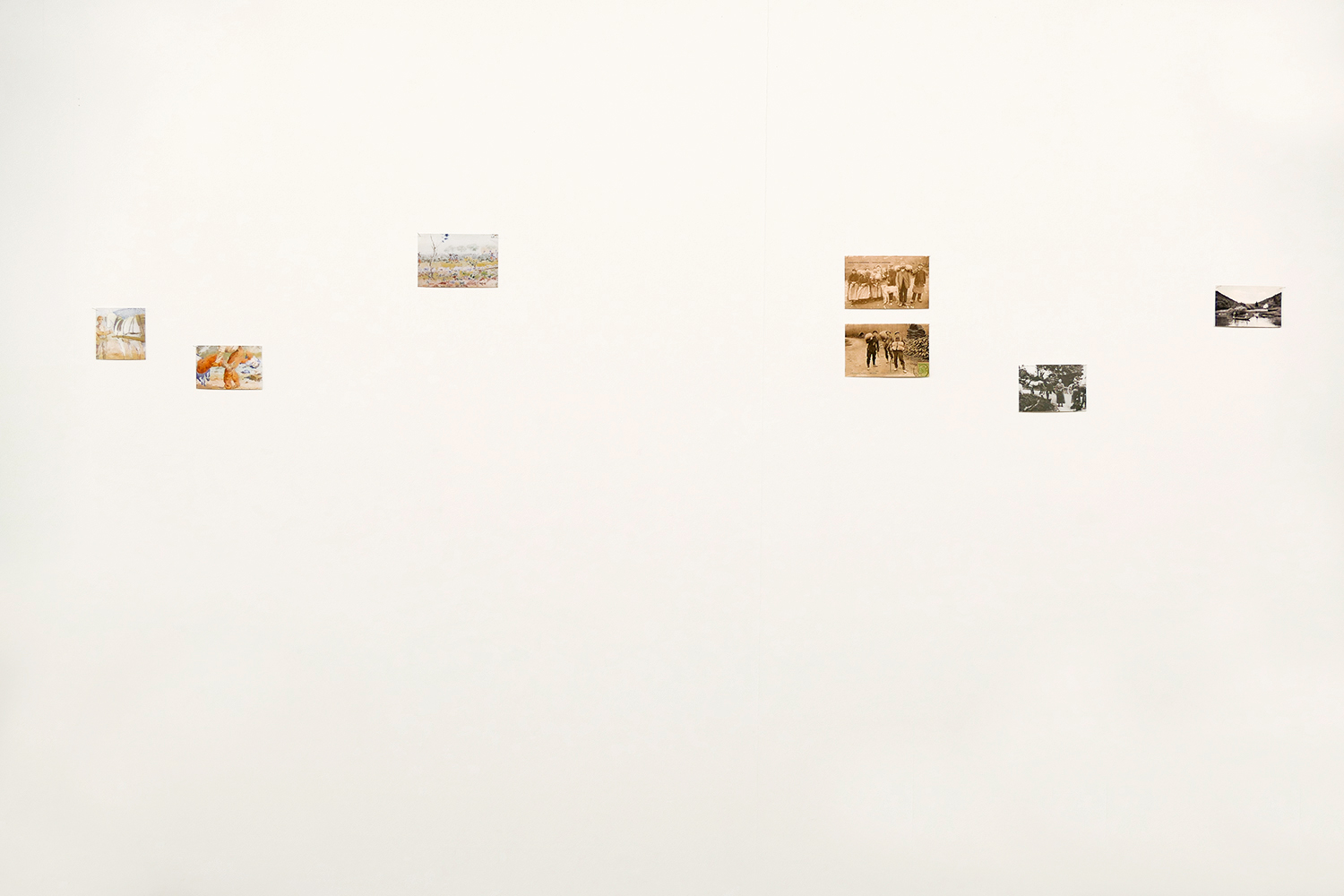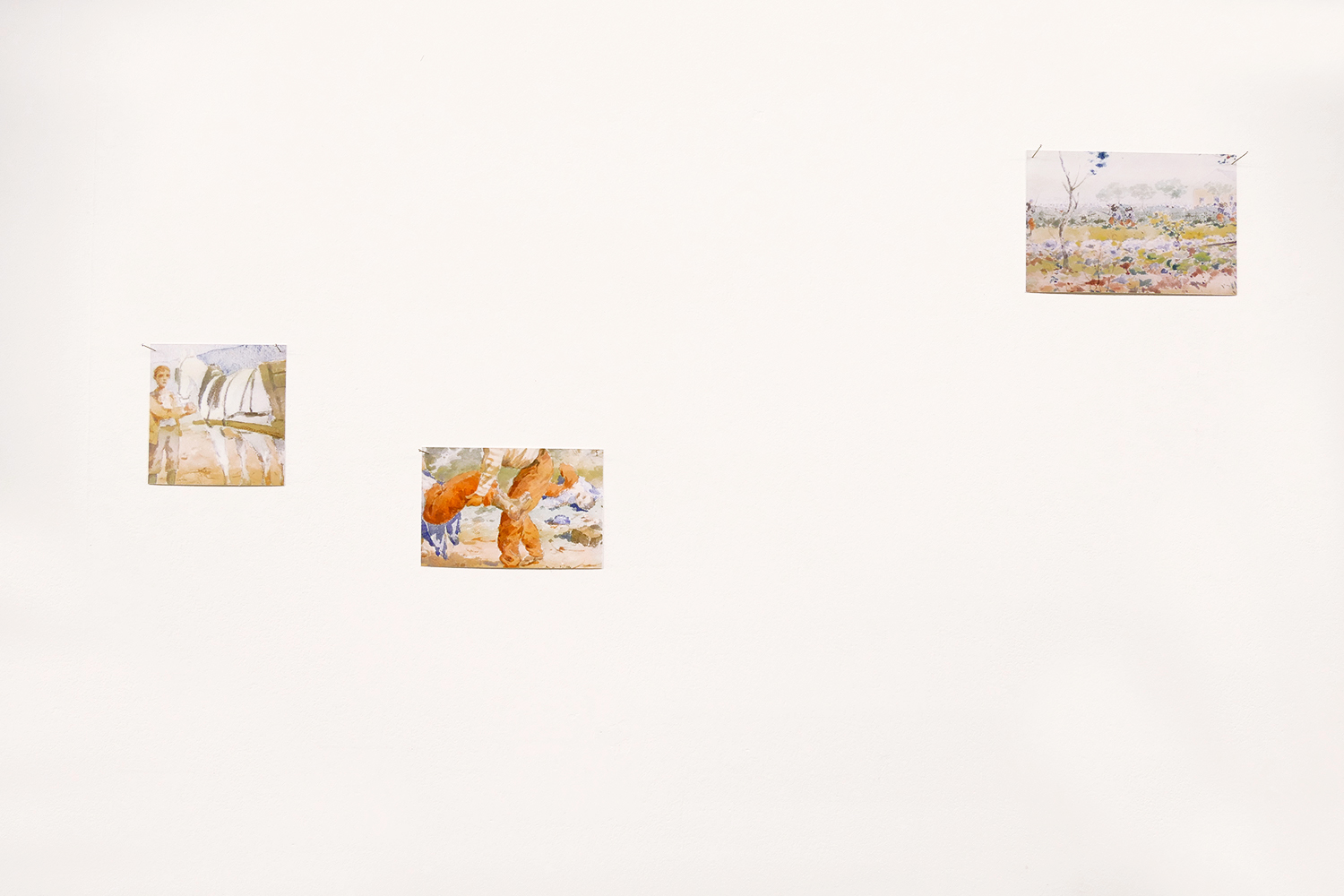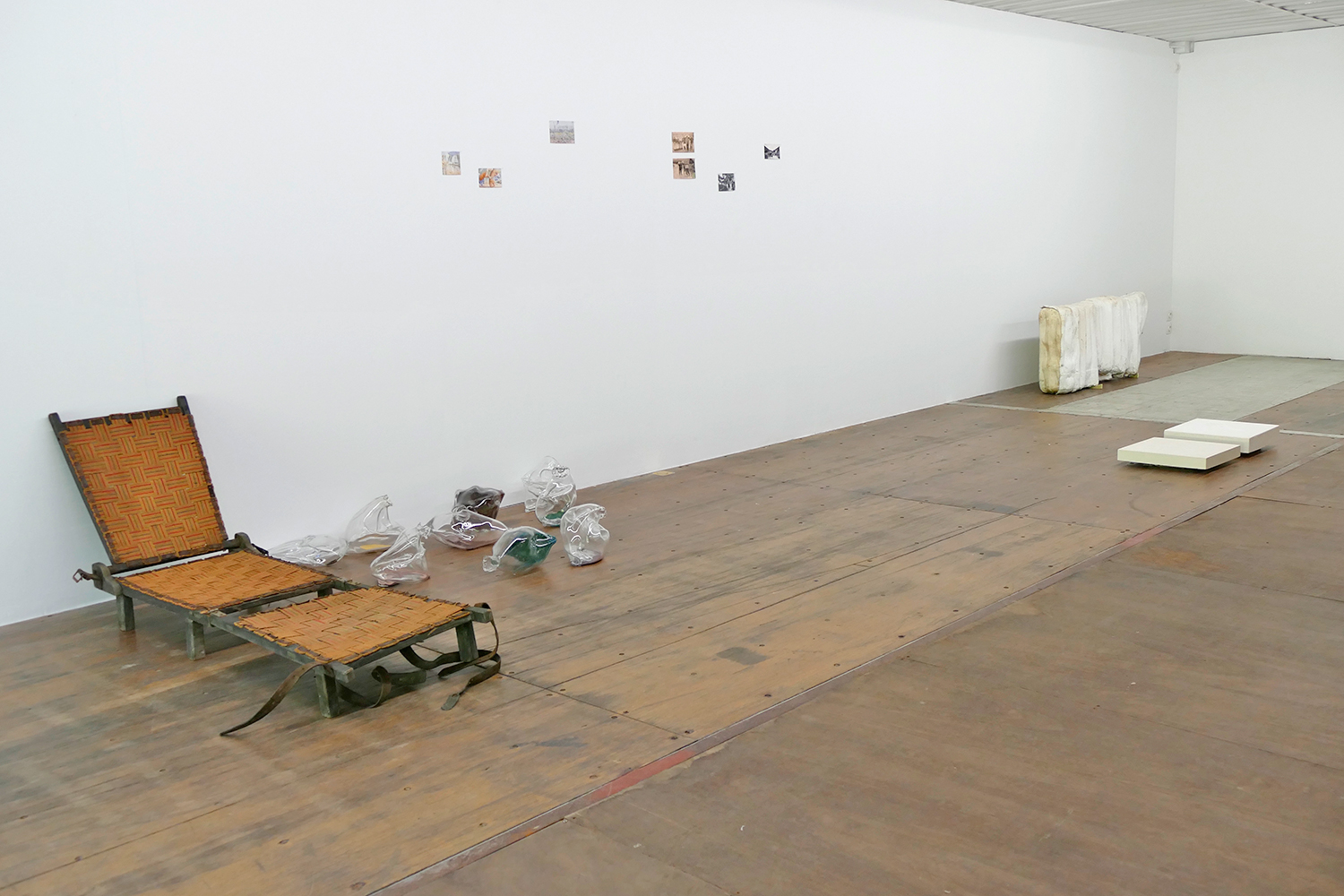Exhibition Traversées (Crossings), Centre d'Art contemporain du Luxembourg belge (CACLB), Buzenol-Montauban, with the Musée Gaumais, Virton, Belgium, 2022.
Solo installation on the first floor of the CACLB.
FROM TO, 2022.
Installation of 9 openwork linen panels
245 x 150 cm across the 12 m width of the room.
Nine Sacs (Bags), 2015.
Blown glass + pigments. See details.
Eight plaster plates, 2022.
40 cm per side x 10-12 cm thick.
Prints on photographic paper.
Various sizes.
Plaster-resin moulds borrowed from the museum and
ambush bed borrowed from the Musée Gaumais.
The installation of openwork linen panels, FROM TO, is an invitation to cross the border. Or rather, the borders. With my scissors, I have drawn the current French and Luxembourg frontiers that border the Gaume and Lorraine, but also the older ones that have repeatedly reshaped the contours of the region, situated at the heart of a turbulent history. City's names have been replaced by designations such as “Here”, “There”, “Somewhere”, “Elsewhere”, “From”, “To”, etc. In doing so, I also invite to question what is at stake around the border, considered as much as a place of passage and exchange as a place of closure and suffering. What does it mean to be from here or there? From time immemorial, the region has been crossed, peacefully or not, by the movement of people.
Deposited on the floor near an ambush bed*, some glass bags, in which traces of memories seem to remain, remind us that indeed, people equipped with only a bag came, and still come, to seek refuge on one side or the other of this same border where one could exchange wine and tobacco under the nose of the customs officers.
Also arranged on the floor, thick plaster plates present the traces, cut in hollow, of hands seen in the Lapidary Museum as well as in the Musée Gaumais, which, to me, synthesize all these external contributions that have contributed to transform, enrich and complexify what makes the very essence of Belgium.
In addition, molds from the reserves of the Musée Gaumais bear witness to Gallo-Roman sculpted stones that had several uses, first decorative, then defensive and finally museum, and whose bas-reliefs (originals and copies) can be admired in the Musée lapidaire (Lapidary Museum) and on the fortified site near the CACLB.
* At the end of the 19th/beginning of the 20th century, the ambush bed — entirely foldable to be more easily transportable — was used at night both by Belgian and French customs officers to watch for fraudsters crossing the border illegally. This one comes from the reserves of the Musée Gaumais.
